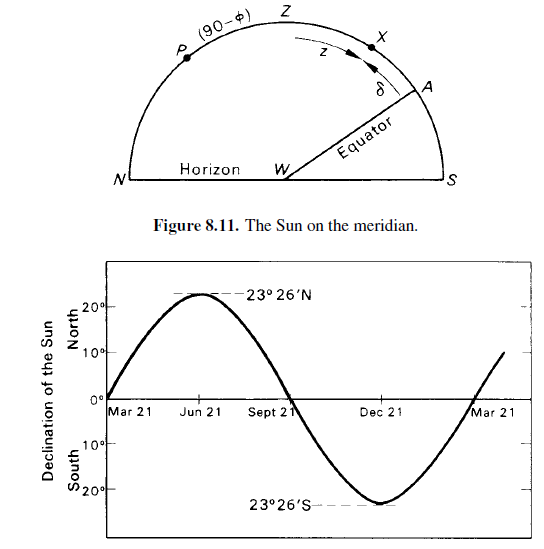
تاريخ الفيزياء

علماء الفيزياء


الفيزياء الكلاسيكية

الميكانيك

الديناميكا الحرارية


الكهربائية والمغناطيسية

الكهربائية

المغناطيسية

الكهرومغناطيسية


علم البصريات

تاريخ علم البصريات

الضوء

مواضيع عامة في علم البصريات

الصوت


الفيزياء الحديثة


النظرية النسبية

النظرية النسبية الخاصة

النظرية النسبية العامة

مواضيع عامة في النظرية النسبية

ميكانيكا الكم

الفيزياء الذرية

الفيزياء الجزيئية


الفيزياء النووية

مواضيع عامة في الفيزياء النووية

النشاط الاشعاعي


فيزياء الحالة الصلبة

الموصلات

أشباه الموصلات

العوازل

مواضيع عامة في الفيزياء الصلبة

فيزياء الجوامد


الليزر

أنواع الليزر

بعض تطبيقات الليزر

مواضيع عامة في الليزر


علم الفلك

تاريخ وعلماء علم الفلك

الثقوب السوداء


المجموعة الشمسية

الشمس

كوكب عطارد

كوكب الزهرة

كوكب الأرض

كوكب المريخ

كوكب المشتري

كوكب زحل

كوكب أورانوس

كوكب نبتون

كوكب بلوتو

القمر

كواكب ومواضيع اخرى

مواضيع عامة في علم الفلك

النجوم

البلازما

الألكترونيات

خواص المادة


الطاقة البديلة

الطاقة الشمسية

مواضيع عامة في الطاقة البديلة

المد والجزر

فيزياء الجسيمات


الفيزياء والعلوم الأخرى

الفيزياء الكيميائية

الفيزياء الرياضية

الفيزياء الحيوية

الفيزياء العامة


مواضيع عامة في الفيزياء

تجارب فيزيائية

مصطلحات وتعاريف فيزيائية

وحدات القياس الفيزيائية

طرائف الفيزياء

مواضيع اخرى
Right ascension
المؤلف:
A. Roy, D. Clarke
المصدر:
Astronomy - Principles and Practice 4th ed
الجزء والصفحة:
p 71
24-7-2020
2320
Right ascension
We have seen that in the equatorial system, one of the coordinates of the star, namely the declination, is constant with time. The other, the hour angle, changes steadily with the passage of time and so is unsuitable for use in a catalogue of stellar positions.
The problem is solved in a manner analogous to the way in which places on the Earth’s surface are defined uniquely in position, although the Earth is rotating on its axis. Latitude is defined with respect to the terrestrial equator. In spherical astronomy, declination, referred to the celestial equator, carries out the same task in fixing the place of a celestial object. The longitude of a place on the Earth’s surface is defined with respect to a meridian through a particular geographical position, namely the Airy Transit Instrument at Greenwich, England, and the meridian through the place in question. The Greenwich meridian cannot be used for celestial position-fixing. Because of the Earth’s rotation under the celestial sphere, the projection of the Greenwich meridian sweeps round the sphere, passing through each star’s position in turn. Some other meridian must be chosen which is connected directly to the celestial sphere.
If a point,  , fixed with respect to the stellar background, is chosen on the celestial equator, its angular distance from the intersection of a star’s meridian and the equator will not change, in contrast to the changing hour angle of that star. In general, then, all celestial objects may have their positions on the celestial sphere specified by their declinations and by the angles between their meridians and the meridian through
, fixed with respect to the stellar background, is chosen on the celestial equator, its angular distance from the intersection of a star’s meridian and the equator will not change, in contrast to the changing hour angle of that star. In general, then, all celestial objects may have their positions on the celestial sphere specified by their declinations and by the angles between their meridians and the meridian through  . The point chosen is the vernal equinox, also referred to as the First Point of Aries, and the angle between it and the intersection of the meridian through a celestial object and the equator is called the right ascension (RA) of the object. Right ascension is measured from 0h to 24h or from 0◦ to 360◦ along the equator from
. The point chosen is the vernal equinox, also referred to as the First Point of Aries, and the angle between it and the intersection of the meridian through a celestial object and the equator is called the right ascension (RA) of the object. Right ascension is measured from 0h to 24h or from 0◦ to 360◦ along the equator from  eastwards, i.e. in the direction opposite to that in which the hour angle is measured. Like the definition of hour angle, this convention holds for observers in both northern and southern hemispheres. In drawing a celestial sphere it is advisable not only to mark the observer’s meridian heavily, inserting on the equator a westwards arrow with HA (hour angle) beside it but also to mark on the equator an eastwards arrow with RA (right ascension) beside it. We now show that the choice of
eastwards, i.e. in the direction opposite to that in which the hour angle is measured. Like the definition of hour angle, this convention holds for observers in both northern and southern hemispheres. In drawing a celestial sphere it is advisable not only to mark the observer’s meridian heavily, inserting on the equator a westwards arrow with HA (hour angle) beside it but also to mark on the equator an eastwards arrow with RA (right ascension) beside it. We now show that the choice of  as a reference point is closely connected with the Sun’s yearly journey round the stellar background of the celestial sphere.
as a reference point is closely connected with the Sun’s yearly journey round the stellar background of the celestial sphere.

Figure 1. The variation of the Sun’s declination through the year.
 الاكثر قراءة في مواضيع عامة في علم الفلك
الاكثر قراءة في مواضيع عامة في علم الفلك
 اخر الاخبار
اخر الاخبار
اخبار العتبة العباسية المقدسة

الآخبار الصحية















 قسم الشؤون الفكرية يصدر كتاباً يوثق تاريخ السدانة في العتبة العباسية المقدسة
قسم الشؤون الفكرية يصدر كتاباً يوثق تاريخ السدانة في العتبة العباسية المقدسة "المهمة".. إصدار قصصي يوثّق القصص الفائزة في مسابقة فتوى الدفاع المقدسة للقصة القصيرة
"المهمة".. إصدار قصصي يوثّق القصص الفائزة في مسابقة فتوى الدفاع المقدسة للقصة القصيرة (نوافذ).. إصدار أدبي يوثق القصص الفائزة في مسابقة الإمام العسكري (عليه السلام)
(نوافذ).. إصدار أدبي يوثق القصص الفائزة في مسابقة الإمام العسكري (عليه السلام)


















